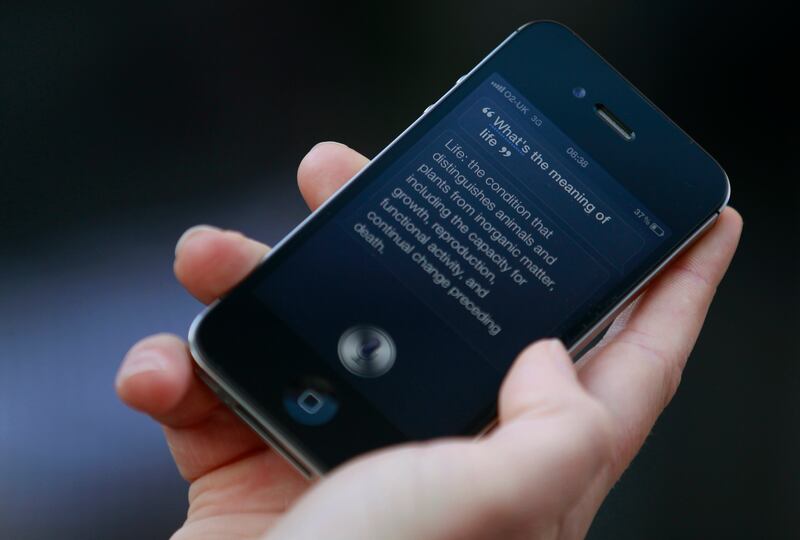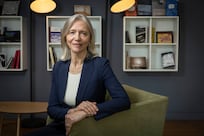Fifty years ago, bemused New Yorkers watched a middle-aged man walking the streets of Manhattan, talking to a large plastic brick about the thickness of a hardback book which he was holding to his right ear.
In fact Martin Cooper had just won the race for the first public phone call on a mobile device.
Now 94, he cannot recall many of the details of that first call, to a competitor’s land line, except to check its clarity.
Most likely it was some version of a phrase all of us have used many times since. “Hello, can you hear me ?”
Mr Cooper, a senior engineer at Motorola at the time, is now widely regarded as the father of mobile phone.
The device Cooper used on April 3, 1973, was a prototype by Motorola, a US company based in Illinois. The DynaTAC 8000X had already cost around $100 million to develop and would not be ready to market for another 10 years.
Ring in the changes
Weighing about a kilo, it took ten hours to charge for half an hour’s talk time and could store just 30 numbers. The price, in 1984, was nearly $4,000, the equivalent of $11,500 today, or about Dh42,000.
Most were bought by companies to share among essential staff when they left town on business. Personal ownership of a mobile phone was only for the very rich and, given the charging time, the very patient.
Today’s cheapest mobile phone costs less than Dh90, weighs 73 grams and will last on standby mode for almost a month. Most prefer more sophisticated models from Apple, Samsung and Google — who bought Motorola in 2012.
The devices of 2023 can access the internet, send and receive instant messages, capture and edit high quality photos and video, play unlimited music, films and TV programmes, make payments and even store digital versions of your airline boarding pass. About the last thing they are used for is making phone calls.
It is a remarkable progression from the first model, and even more so in the UAE, where there are an astonishing 187 mobile phone subscriptions for every 100 people, one of the highest in the world.
New industry takes off
As an achievement it is all the more impressive when you consider the first direct dial landline phone call was made in Dubai in 1960, and in Abu Dhabi in 1963, just ten years before the mobile phone made its debut in New York.
By 1983, the first cell phone networks were sufficiently advanced for Motorola to launch the DynaTAC 8000X as a commercial product. Etisalat, the Emirates Telecommunication Company, was formed in 1976 and within seven years was offering the Middle East’s first mobile network.
Etisalat also offered phones, with the NEC TR5E1000-9A marketed in 1987 as the “Anis”, Arabic for a companion who brings happiness.
The Anis was a significant upgrade from devices like the Motorola DynaTAC.
It was less than a quarter of the price, at Dh8,500, weighed half as much and had 80 minutes talk time, with an LED display and hands-free operation.

Crucially, along with Michael Douglas and Charlie Sheen, the mobile phone was one of the stars of Oliver Stone’s Wall Street, released that year and the epitome of yuppie ambition.
One of the first customers for the Anis was Mohammed Al Fahim, the Emirati businessman and the author of the best selling memoir Rags to Riches.
The handset is now an exhibit in his private collection. “It's very heavy, you cannot carry it in your pocket, and talk time would be about 45 minutes. Then you would have to recharge it for about 2 hours. So you used it only when necessary,” he told The National in an interview in 2011.
Even before Etisalat, Sheikh Zayed, as Ruler of Abu Dhabi, had invested in a communication system of car phones, given to sheikhs and senior officials assist negotiations leading to the formation of the UAE in 1971.
The enthusiasm for mobile phones has only intensified in the UAE, with the vast majority of the population estimated to own at least one — with many having two or three.
Queues continue to form outside stores for the release of the latest Apple or Samsung models. The iPhone 3G was the first to be officially released in February 2009, available in 8GB and 16GB models and with a price tag of Dh2,646 plus a monthly fee of Dh199 for 125 minutes of calls and 500 MB of data.
For less than Dh25, today customers can buy the same amount, although most will need much more. The latest iPhone 14 retails at just under Dh3,200 — not much more than 14 years ago and infinitely more sophisticated.
In recent interviews, Cooper said laments the loss of privacy to the risk of internet addiction and spread of harmful content especially among kids.






















